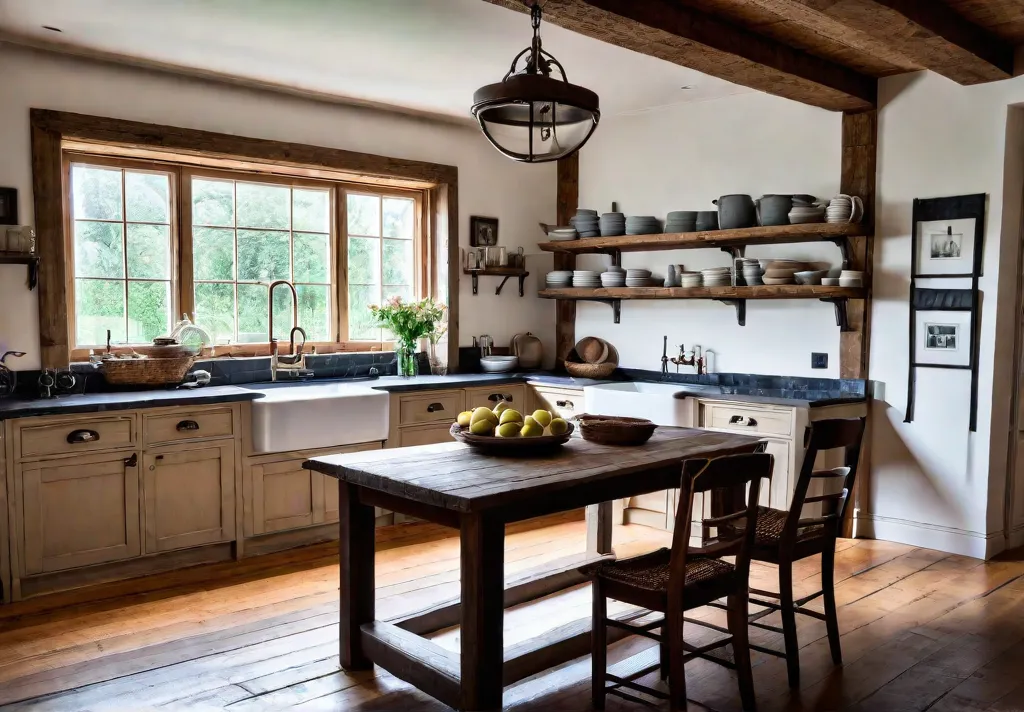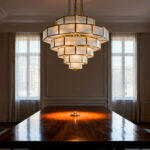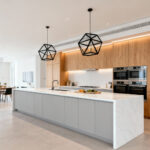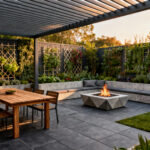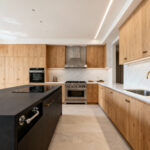There’s something undeniably alluring about a kitchen that exudes character, warmth, and a sense of history. While contemporary designs often captivate with sleek lines and cutting-edge aesthetics, traditional kitchen styles offer a timeless charm that transcends fleeting trends. Imagine stepping into a space where every detail whispers stories of bygone eras, where the aroma of freshly baked bread mingles with the patina of well-loved surfaces. From the cozy embrace of a farmhouse kitchen to the opulent grandeur of a Victorian masterpiece, each classic style holds the power to transport us to a world of rich heritage and cherished traditions.
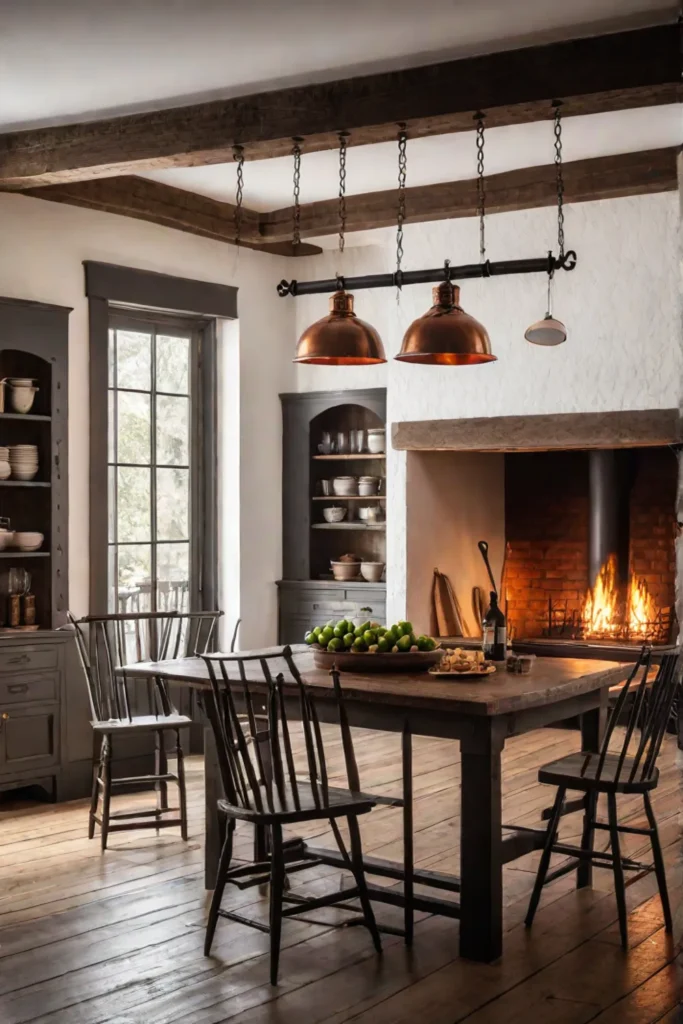
The Heartwarming Allure of Farmhouse Kitchens
Picture a rustic, sun-drenched space where the gentle creaking of wood floors and the clinking of mason jars filled with freshly picked wildflowers create a symphony of simple pleasures. This is the essence of a farmhouse kitchen – a celebration of rural living where natural materials and vintage-inspired accents take center stage.
Imagine shiplap walls adorned with open shelving, displaying a curated collection of ironstone pottery and copper cookware passed down through generations. The warm, honey-hued tones of reclaimed wood cabinetry and butcher block countertops invite you to linger while an apron-front sink beckons you to roll up your sleeves and embrace the joy of homemade delicacies. Farmhouse kitchens prioritize functionality and practicality, yet they do so with an undeniable sense of rustic charm that instantly puts one at ease.
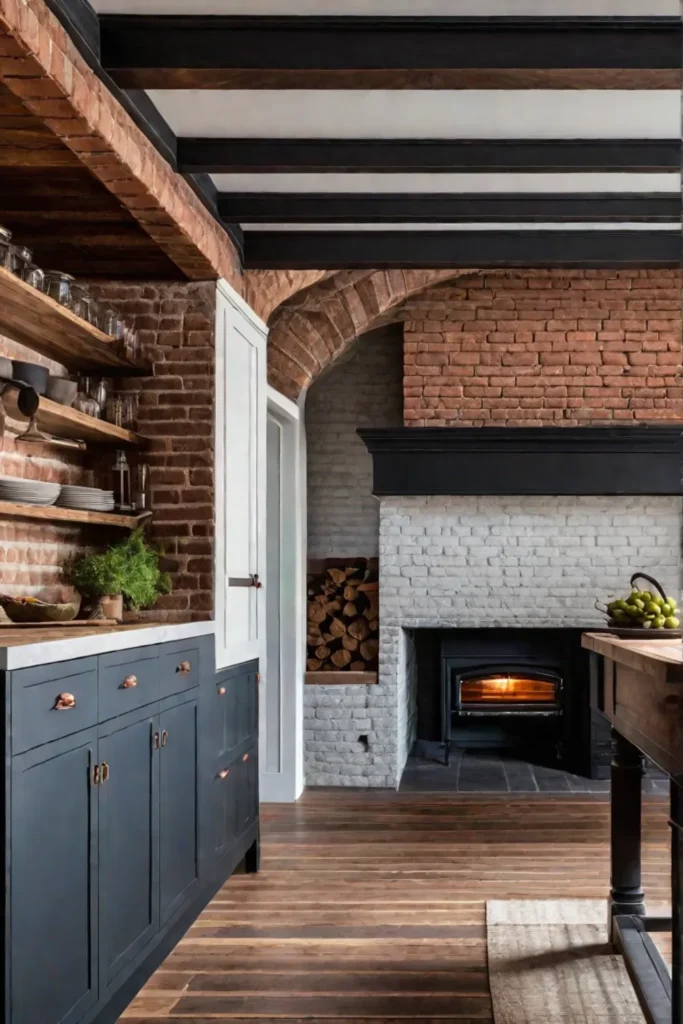
Interestingly, this beloved style emerged in the late 19th century as a response to the Industrial Revolution, a longing for a simpler, more authentic way of life. By incorporating vintage-inspired light fixtures, such as Edison bulbs or industrial-style pendants, you can effortlessly capture the essence of this timeless aesthetic. And what could be more fitting than natural wood tones, like oak or pine, gracing your cabinetry and countertops, inviting you to embrace the warmth and character of the farmhouse tradition?
The Opulent Grandeur of Victorian Kitchens
Step into a world of decadence and luxury, where every surface tells a tale of extravagance and refined taste. Victorian kitchens, born during Queen Victoria’s reign in the 19th century, exude an air of grandeur that transports you to an era of unparalleled elegance.
Envision intricate, detailed cabinetry adorned with intricate moldings and corbels, each curve and flourish a testament to the artistry of skilled artisans. Elaborate tile work, featuring intricate patterns and decorative backsplashes, catches the eye, while ornate lighting fixtures, like glittering chandeliers and wall sconces, cast a warm, inviting glow upon the space. Rich, jewel-toned color schemes, such as deep emerald greens or opulent burgundies, envelop you in a luxurious embrace, reminding you of the Victorian era’s penchant for opulence and grandeur.

Interestingly, Victorian kitchens were often designed as separate rooms from the rest of the home, reflecting the division of labor and social class during that period. The introduction of cast-iron stoves and ranges during this era revolutionized kitchen design, ushering in a newfound emphasis on functionality alongside aesthetic splendor.
To truly capture the essence of a Victorian-inspired kitchen, consider incorporating intricate architectural details, such as decorative moldings and corbels, to add a touch of grandeur. Experiment with bold, jewel-toned color schemes, allowing the rich hues to envelop your space in a luxurious embrace, transporting you to an era of unparalleled elegance.
The Timeless Appeal of Colonial Kitchens
Step back to an era when simplicity reigned supreme, where function precedes frivolous embellishments. Colonial kitchens, born from the practical sensibilities of early American settlers, offer a refreshing respite from the excesses of modern living, inviting us to embrace the beauty of understated elegance.
Imagine a space where natural materials like wood, stone, and brick converge, creating a warm, inviting atmosphere that whispers tales of resilience and resourcefulness. Simple, practical cabinetry and furniture, devoid of excessive ornamentation, exemplify the colonial spirit of practicality and efficiency. Exposed beams and wooden floors lend an air of rustic charm, while the inclusion of early American cooking technologies, such as wood-burning stoves, transports you to a bygone era.
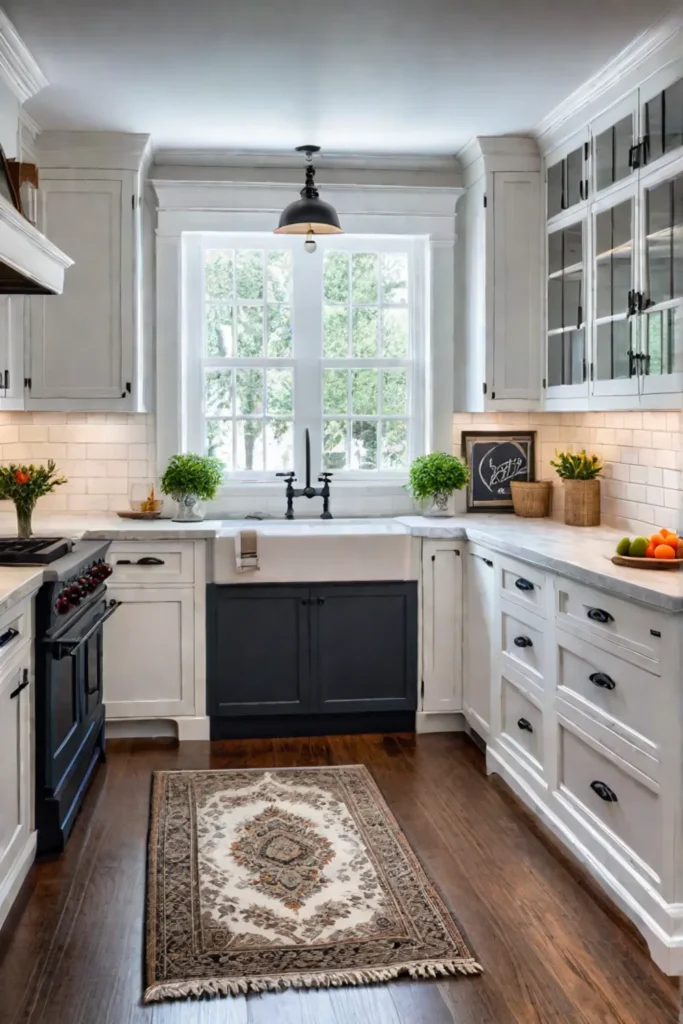
Interestingly, colonial kitchens were often located in separate buildings or wings, known as “summer kitchens,” to keep the main living space cooler – a testament to the ingenuity of our forebears in adapting to their environment. The design of these spaces was heavily influenced by the limited resources and harsh living conditions faced by early American settlers. Yet, their resourcefulness gave birth to a style that has endured time.
To truly embrace the colonial aesthetic, consider incorporating vintage-inspired hardware, such as wrought-iron hinges and pulls, to lend an air of authenticity to your cabinetry. Highlight natural materials like exposed wood beams and stone or brick walls, allowing their rugged beauty to take center stage and transport you to a simpler, more grounded era.
The Enduring Elegance of Craftsman Kitchens
In an age where mass production reigned supreme, the Craftsman style emerged as a defiant celebration of handcrafted artistry and attention to detail. Craftsman kitchens, born in the late 19th and early 20th centuries, exude a warm, earthy ambiance that invites you to slow down and savor the beauty of thoughtful design.
Envision a space where natural materials like wood, stone, and copper converge, each surface bearing the indelible mark of skilled hands. Clean, rectilinear lines and minimal ornamentation create a sense of harmonious simplicity, while warm color palettes, often featuring rich earth tones, envelop you in a cozy embrace. Built-in cabinetry and furniture seamlessly integrate into the overall architecture, blurring the lines between form and function.
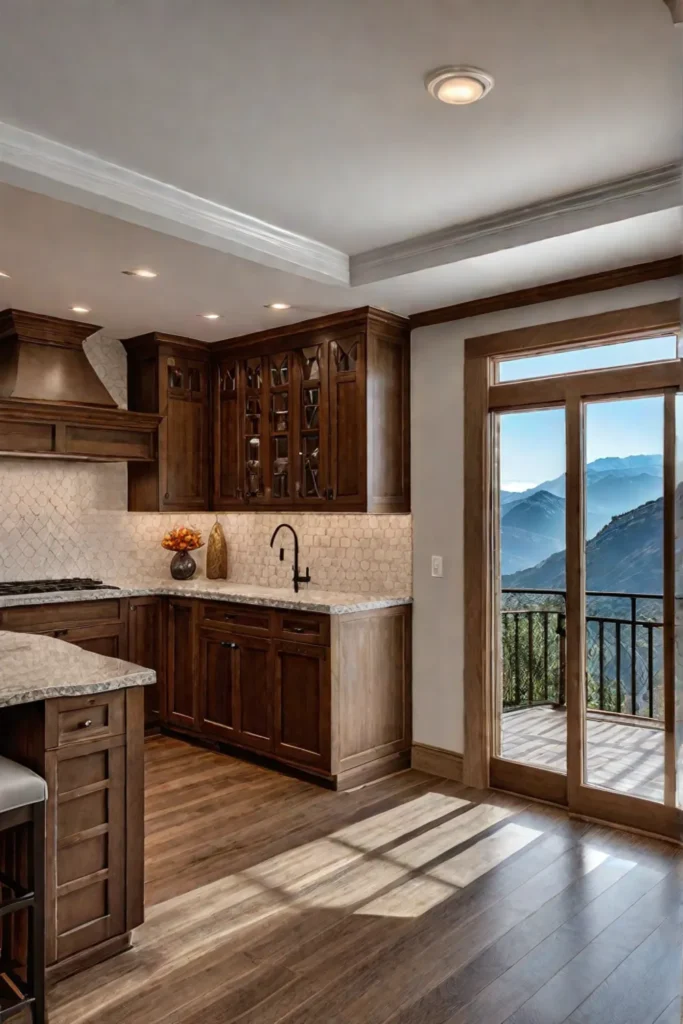
Interestingly, the Craftsman style was heavily influenced by the Arts and Crafts movement, which championed the beauty and integrity of handmade goods. This philosophy manifested in the design of Craftsman kitchens, where built-in cabinetry and furniture reflected the belief that the kitchen should be an integral part of the home’s overall aesthetic rather than a mere practical space.
To capture the essence of the Craftsman aesthetic, consider incorporating handcrafted elements, such as custom-made wooden cabinetry or hammered copper sinks, allowing the artistry of skilled artisans to take center stage. Opt for warm, earthy color schemes, such as deep greens, rich browns, and natural wood tones, to create a cozy, inviting ambiance that beckons you to linger and savor life’s simple pleasures.
The Rustic Charm of French Country Kitchens
Step into a world where the rustic charm of the French countryside meets elegant sophistication, where every detail whispers tales of sun-drenched vineyards and lazy afternoons spent savoring the finer things in life. French Country kitchens, born in the 17th and 18th centuries, exude a warmth and whimsy that instantly captivates the senses.
Imagine a space where natural materials like stone, distressed wood, and wrought iron converge, creating a harmonious blend of rustic and refined elements. French-inspired accents, such as floral patterns and toile fabrics, add a touch of whimsy, while warm, muted color palettes, often featuring shades of blue, yellow, and white, create a serene and inviting atmosphere. Open, airy spaces and abundant natural light lend an air of effortless elegance, while farmhouse-inspired elements, like apron-front sinks and vintage-inspired appliances, pay homage to the rural roots of this beloved style.
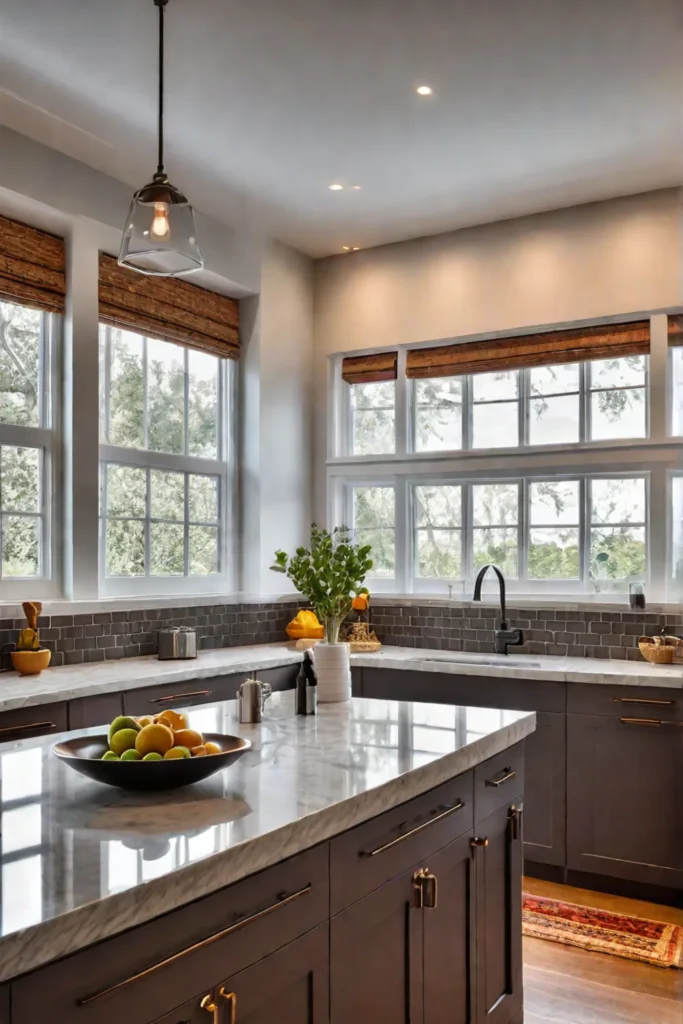
Interestingly, many French Country kitchens feature a large, central farmhouse-style table, which serves as a gathering place for family and friends, echoing the importance of communal living in the French countryside. This style emerged as a celebration of the agricultural heritage and rural lifestyle that defined the French countryside, where the kitchen was the heart of the home and a place for creating cherished memories.
To infuse your space with the essence of French Country charm, consider incorporating vintage-inspired light fixtures, such as wrought-iron chandeliers or sconces, to add a touch of rustic elegance. Use a mix of natural materials, like stone, wood, and tile, to create a warm, inviting ambiance reminiscent of a French farmhouse, where the beauty of nature and the comforts of home seamlessly intertwine.
The Modern Nostalgia of Colonial Revival Kitchens
In an era of rapid industrialization and urbanization, the Colonial Revival style emerged as a nostalgic embrace of America’s rich heritage. Colonial Revival kitchens, born in the late 19th and early 20th centuries, seek to reinterpret the practical, functional design of early American colonial kitchens with a modern twist.
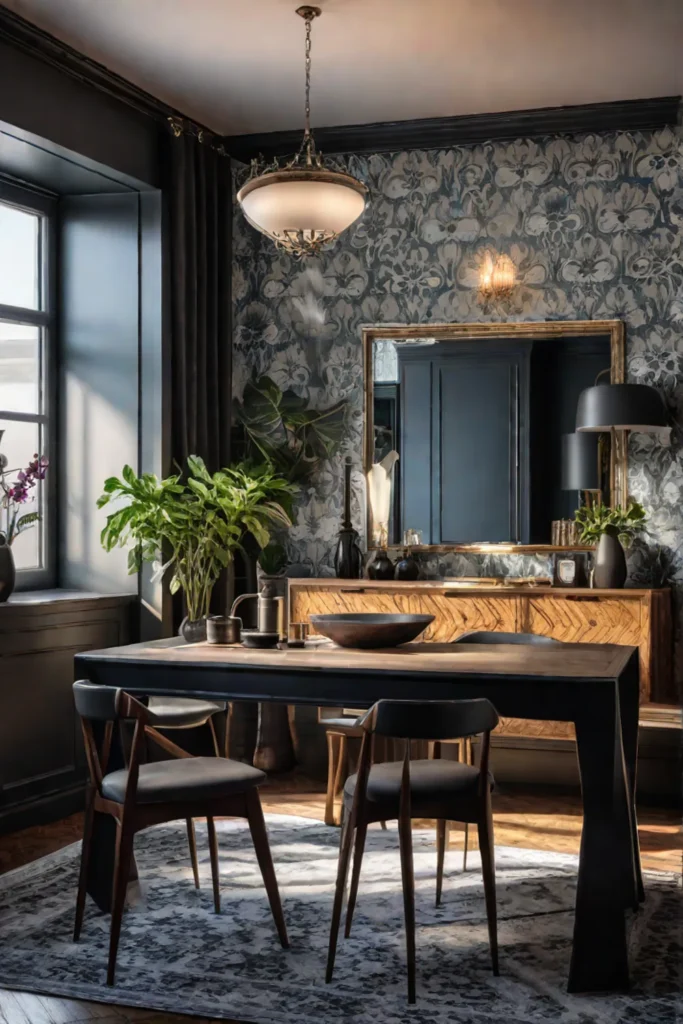
Envision a space where natural materials like wood, stone, and brick converge, creating a warm and inviting atmosphere that pays homage to the resourcefulness of our forebears. Traditional colonial design elements, such as beamed ceilings and exposed wood, lend an air of authenticity, while efficient, practical layouts and ample storage cater to the demands of modern living. Seamlessly blending the past with the present, these kitchens integrate modern appliances and technology, creating a harmonious fusion of historical charm and contemporary convenience.
Interestingly, the Colonial Revival movement was fueled by a growing interest in preserving and celebrating America’s colonial heritage, a desire to reconnect with the values and traditions that shaped our nation. Many Colonial Revival kitchens incorporated elements from other traditional styles, such as Craftsman or Federal, creating a unique, eclectic aesthetic that defied rigid categorization.
To capture the essence of this nostalgic style, consider blending traditional colonial design elements, like beamed ceilings and shaker-style cabinetry, with modern appliances and conveniences, creating a seamless, updated look that celebrates the best of both worlds. Incorporate vintage-inspired hardware, such as wrought-iron hinges and pulls, to add an air of authenticity to your colonial-inspired design, transporting you to a bygone era while embracing the comforts of modern living.
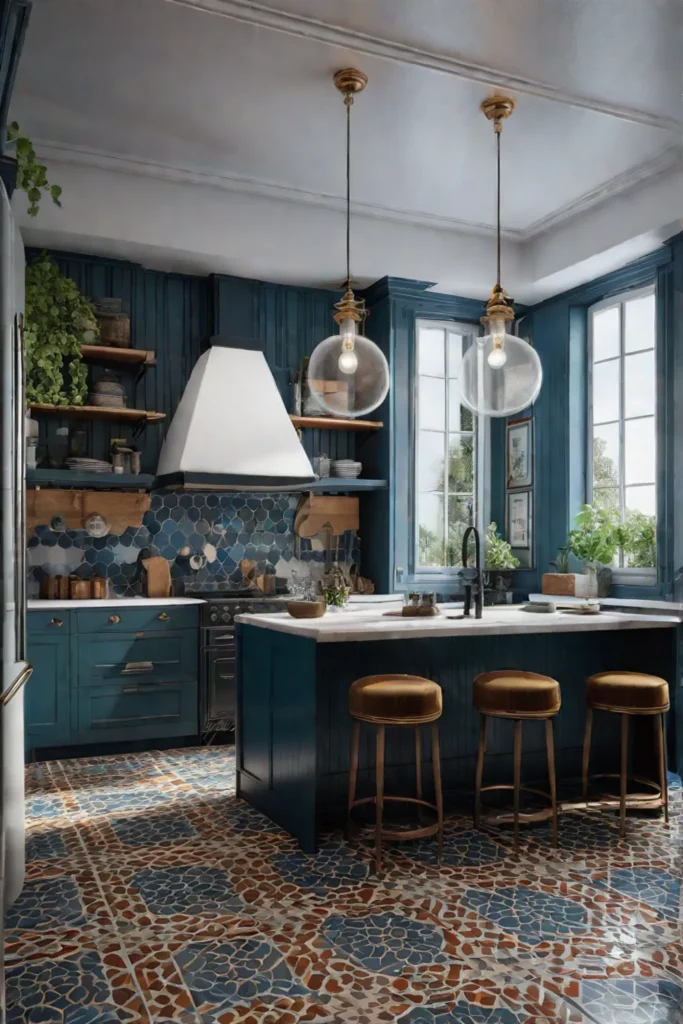
The Timeless Harmony of Transitional Kitchens
In a world that often demands us to choose between the past and the present, transitional kitchens offer a harmonious middle ground—a seamless fusion of traditional warmth and contemporary sleekness. This style, born in the late 20th century, allows homeowners to embrace the best of both worlds, creating a timeless aesthetic that transcends fleeting trends.
Envision a space where traditional and contemporary design elements coexist perfectly, where neutral color palettes and clean, simple lines provide a serene backdrop for the interplay of natural and engineered materials. Imagine the warmth of wood cabinetry juxtaposed against the cool, sleek surfaces of quartz countertops, creating a visual dialogue that captivates the eye. Modern appliances and technology seamlessly integrate into the space, ensuring functionality and convenience are never sacrificed in pursuing aesthetic perfection.

Interestingly, transitional design emerged as a response to contemporary design’s stark, minimalist aesthetic, offering a more inviting and livable alternative that celebrates the beauty of traditional and modern elements. Many transitional kitchens draw inspiration from conventional styles, such as Craftsman, Colonial, or French Country, creating a unique, personalized look that defies rigid categorization.
To achieve a successful transitional aesthetic, pairing traditional cabinetry with sleek, modern hardware, such as shaker-style or raised-panel doors, creating a cohesive visual harmony. Incorporate a mix of natural materials, like wood and stone, with engineered surfaces like quartz or laminate to create a balanced, harmonious design that celebrates the best of both worlds.
The Eclectic Embrace of Individuality
In a world where cookie-cutter designs often reign supreme, eclectic kitchens offer a refreshing departure from the norm. This style, born from a desire for self-expression and individuality, encourages homeowners to embrace a bold fusion of diverse design influences, creating a truly one-of-a-kind space that reflects their unique personalities and tastes.
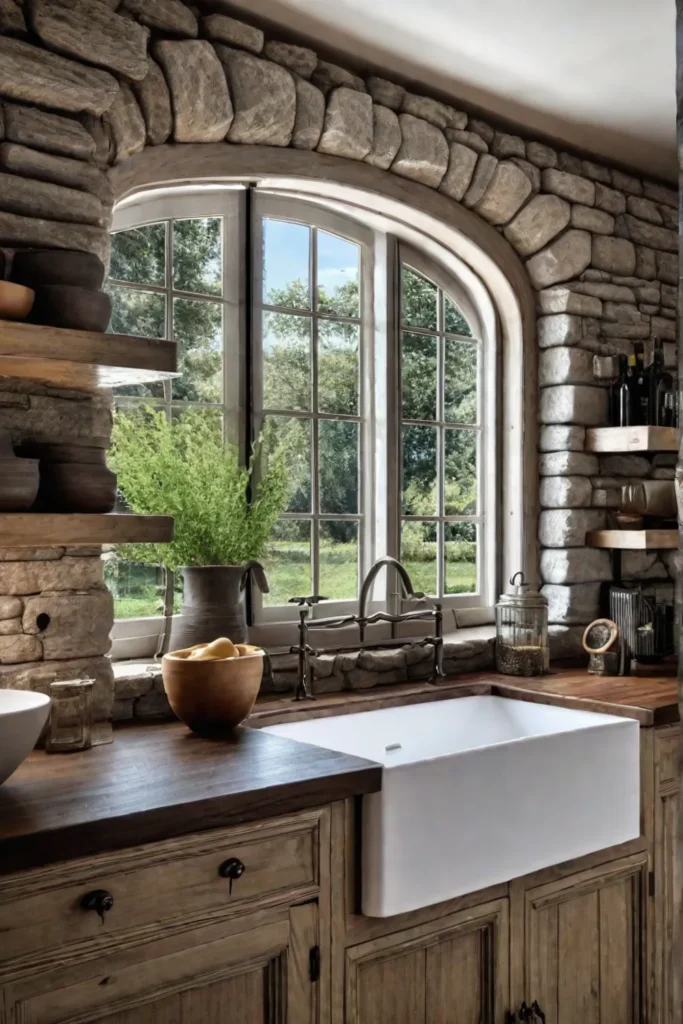
Imagine a space where various design styles converge, where vintage and modern elements coexist in a delightful dance of contrasts. Envision a wide range of materials, colors, and textures, each adding its unique voice to the symphony of design. Carefully curated repurposed and vintage items lend an air of character and storytelling, inviting you to embrace the beauty of imperfection and the richness of history.
Interestingly, eclectic design emerged in the late 20th century due to the growing popularity of diverse design styles and the desire for personalized spaces that defied rigid categorization. Many eclectic kitchens feature a mix of vintage and modern elements, reflecting the homeowner’s journey and the ever-evolving nature of their tastes and preferences.
To create a truly successful eclectic kitchen, consider combining vintage-inspired elements, such as reclaimed wood cabinetry or antique light fixtures, with modern appliances and technology. This will create a unique, visually captivating space that defies convention. Incorporate various materials, colors, and textures, allowing each element to contribute its distinctive voice to the overall design narrative. Embrace the beauty of imperfection and the richness of history, celebrating the individuality at the heart of the eclectic aesthetic.
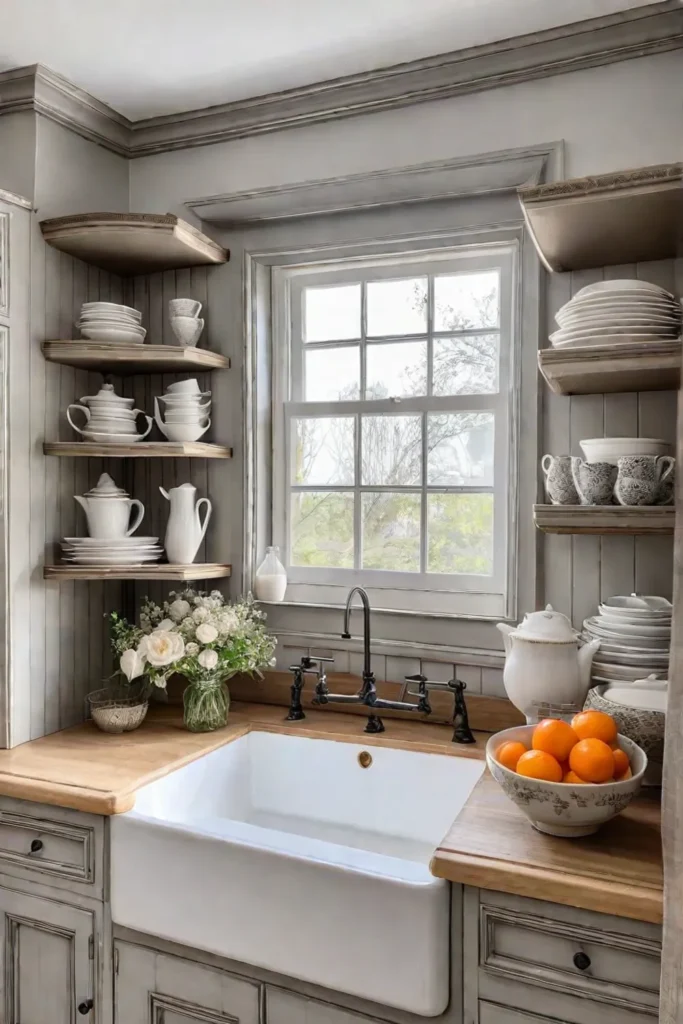
No matter which classic kitchen style captures your heart, one thing is certain. These timeless designs offer a glimpse into the rich tapestry of our collective past, inviting us to embrace the beauty of tradition while adapting it to the demands of modern living. Whether you seek the cozy embrace of a farmhouse kitchen or the opulent grandeur of a Victorian masterpiece, each style can transform a mere space into a cherished sanctuary, where memories are forged and traditions are passed down from generation to generation.
So, step into the world of classic kitchen design and let the stories of bygone eras unfold before you. Embrace the warmth, character, and enduring elegance that these timeless styles offer, and create a space that not only nourishes the body but also feeds the soul with the richness of its heritage and the promise of cherished moments yet to come.
